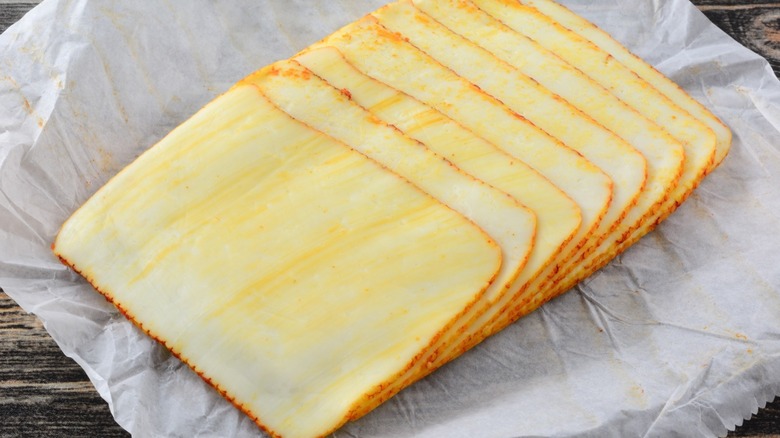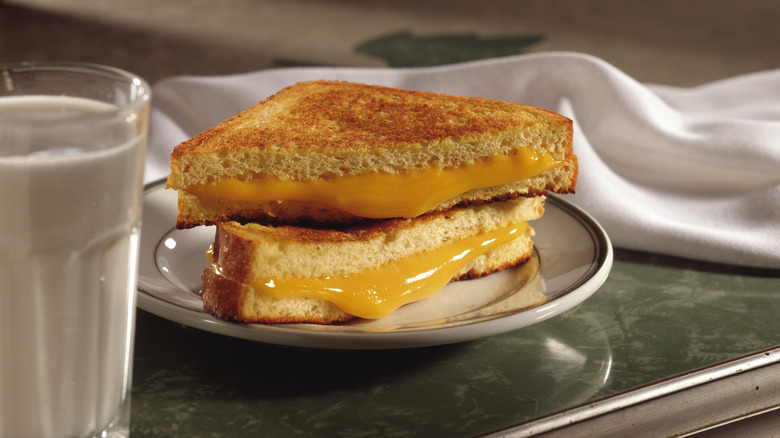The Origins Of Muenster Cheese
Muenster cheese is easily spotted for its orange rind and unique name, and has been gracing cheese boards for centuries. According to Cheese House, muenster was first cultivated in the northeastern region of France, Alsace, by migrated monks — it should be noted that the French spell their version "munster," as opposed to "muenster," the Americanized version. While it may be French in origin, muenster immigrated to the U.S. in the 1800s. As you may have guessed, it got its American roots specifically in Wisconsin, notes Wisconsin Cheese. It should come as no surprise that the residents of a state who affectionately call themselves "cheeseheads" would be responsible for popularizing this mild, nutty, and perfect-for-melting cheese.
From monasteries to Milwaukee, this cheese has become a favorite for both standard grocery store aisles and gourmet cheesemongers. With this brief geographical history in mind, let's delve into what makes muenster, well, muenster.
What makes muenster cheese unique?
Like cheddar, muenster develops additional flavors and tasting notes as it ages. The original French adaptation is a soft cheese made with unpasteurized cow's milk and a washed rind that lends a tangy taste to an otherwise subtle cheese, says Cheese.com. This is what causes that orange-red color on the outside. And while we attribute this cheese's origins to France, the Alsace region actually borders Germany, and it was German immigrants who brought the recipe to the USA, notes The Kitchen Community.
American Muenster is still made from cow's milk, but the FDA prohibits all raw or unpasteurized cheeses. This leads to a milder, nuttier taste than French muenster. And while it doesn't have the same washed rind as a typical muenster, it's still orange! Why? That's thanks to a seasoning called annatto, says Wisconsin Cheese Mart. Finally, thanks to its semi-soft texture, this cheese is ideal for melting, so use it in a grilled cheese, homemade macaroni and cheese, or add a slice to your burger.

